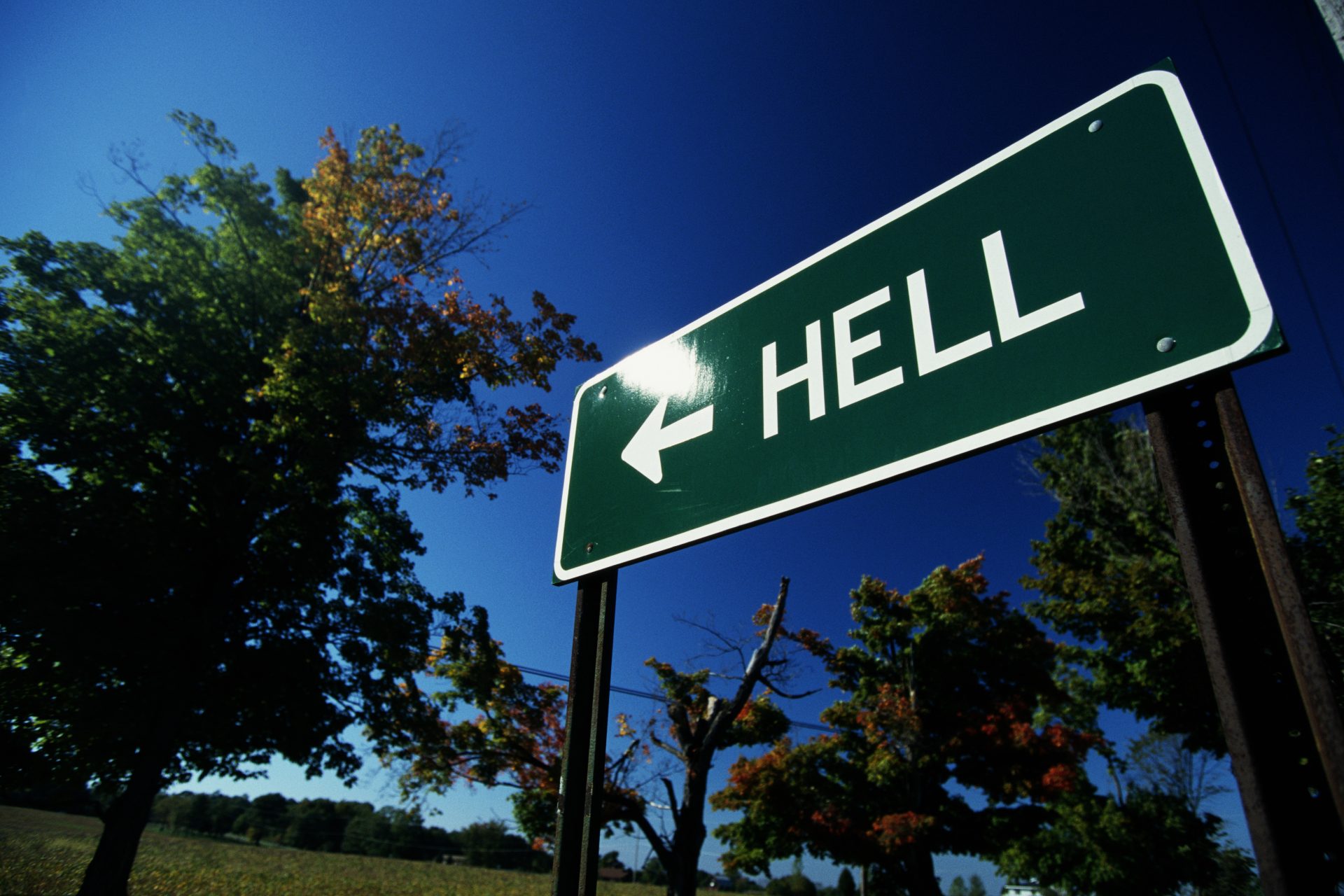The most dangerous active volcanoes in the world
On New Zealand's North Island, in the heart of Egmont National Park, Mount Taranaki is an active stratovolcano, which last erupted in the 19th century. This impressive - and beautiful - volcano rises to 2,518 meters above sea level and attracts many hikers each year.
This is one of the many subglacial volcanoes that remain active in Iceland. In 2021, residents of the nation's capital Reykjavik can easily see the glow from the lava coming out of this giant, as it lies only 32 kilometers (20 miles) from the city.
This volcano has caused immense devastation on the island of St Vincent in the past months, forcing tens of thousands of people to abandon their homes and flee the area. Its previous eruption had occurred in 1979. Before that, the island had seen a particularly destructive explosion in 1902 which killed 1600 people.
Image: Zen Punnett / Getty
In Guatemala, the Acatenango is a superb active stratovolcano, which culminates at 3975 meters of altitude. Its last eruption dates back to November 1972.
This photo was taken by NASA on May 23, 2009, and shows the Cleveland volcano releasing a plume of ash, rising nearly 6 km above the Pacific Ocean. Located in Alaska, on Chuginadak Island, Mount Cleveland is an active volcano whose last eruption is dated June 1, 2020.
This is the highest volcanic peak in Iran, and the highest in Asia, peaking at 5,610 meters above sea level. Mount Damāvand is considered "dormant," as its last activity is estimated by scientists to be in the year 5350 BC.
This Icelandic volcano is located underneath Vatnajökull, which is the country's largest ice cap. Its most recent eruption was on August 29, 2014. It ended six months later on February 27, 2015.
Arenal is an active stratovolcano in Costa Rica, located in the Tilarán mountain range, and culminating at 1720 meters above sea level. It is the youngest volcano in the country and was in an eruption from July 1968 to December 2010.
Masaya is an active volcano located 25 km south of Managua, the capital of Nicaragua, and is one of the seven active volcanoes in the country. It is one of the few volcanoes in the world that is accessible by car. Indeed, its lava lake culminates at only 630 meters of altitude.
On the island of Java, Mount Bromo is a volcano still active. It forms, with Mount Batok and Mount Semeru, a magical landscape, which can be observed in the national park of Bromo-Tengger-Semeru. The Bromo culminates at 2 329 meters above sea level, and its smoking crater measures 800 meters in diameter. Its last eruption was on April 15, 2021, and lasted until October 2021.
In the Canary Islands, and more precisely on the island of Tenerife, Teide is a stratovolcano culminating at 3715 m altitude. It is the highest peak in the Atlantic Ocean, the highest point in Spain, and the third highest and most voluminous volcanic structure on the planet. Its last eruption dates back to the beginning of the XX century, in 1909. It lasted 10 days.
This photo of Mauna Loa (Hawaii) was taken on December 4, 2022. The world's largest volcano erupted on November 27, 2022, after 38 years of dormancy. Fountains of lava spouted nearly 60 meters high, and impressive molten rock flowed down its sides. A true spectacle of nature that for the moment has not caused any casualties on the American archipelago.
A small archipelago, lost in the middle of the Pacific, these islands are regularly shaken by intense seismic activity. It even caused a new island to emerge in 2014-2015, connecting two islands between them (Hunga Tonga and Hunga Ha'apai). The problem of this volcano, partly underwater, is that it releases huge quantities of rocks and ashes when it awakens, which then fall on the inhabitants. The last eruption, on January 14, 2022, was so explosive that it was heard as far as Alaska and the Fiji Islands.
A volcano with an unpronounceable name, except for those who speak Icelandic. The volcano is 1,651 meters (5,466 feet) high and its recurrent activity sometimes causes problems. This was the case, for example, in 2010, when smoke from the volcano's eruption spread across Europe and interfered with most of its air traffic.
Image: Marc Szeglat / Unsplash
This is an active stratovolcano with eruptions that have been problematic in recent times. The BBC quoted a description of one such eruption (in 2019) and the evacuation of people nearby: "It looked like Chernobyl, everything was covered in ash."
Image: Max Vnck / Unsplash
In 1980, Mount St Helens in Washington State erupted and caused unprecedented destruction: 57 deaths, homes destroyed, 24 kilometres (15 miles) of railways and 300 kilometres (186.5 miles) of roads devastated. Since then, the activity of this giant has been closely monitored. It is part of the Pacific Ring of Fire, a series of large and active volcanoes.
The Merapi volcano has erupted 70 times since 1548. In 2021, it shook the island of Java again, although at other times it can look peaceful and calm, as in this image.
Image: Frenky Harry / Unsplash
One of the most active volcanoes in Japan, located on the island of the same name, the Sakurajima gives rise to spectacular images like this one.
Image: Marc Szeglat / Unsplash
This stratovolcano is 2,460 meters (8,000 feet) high formed in the Pleistocene and located on the island of Sumatra. Its activity has caused smoke columns 5000 meters high.
Image: Yosh Ginsu / Unsplash
The danger of this volcano lies in the possibility that it will wake up from its lethargy and return to devastate its surroundings, as it has done throughout its history, from the mythical destruction of Pompeii (photo) to the numerous eruptions of the 19th century that killed thousands. For the time being, it remains in a state of lethargy, although some activity has been detected in its entrails.
Image: Andy Holmes / Unsplash
A volcano with a tragic history. It can remain quiet and then erupt violently, rapidly producing tons of lava. This is what happened, for example, in 1977 when lava from this volcano reached the town of Goma, 100 kilometers (62 miles) away, and killed dozens of people.
Image: Pierre Yves Burgi / Unsplash
When the Pacaya volcano in Guatemala erupts, it spews out dangerous tongues of lava. However, some people see no reason to be alarmed by this liquid fire and go hiking to see it.
Image: Dimitry B / Unsplash
This volcano in Martinique has ceased activity but is worth watching. In 1920, its eruption caused the greatest loss of life ever caused by a volcano: an estimated number of 30,000 people died. Saint-Pierre, the island's main town, was devastated. Although this volcano appears to be relatively inactive, researchers are keeping a close eye on what is happening inside.
Image: Rsddrs / Wikimedia
The island of Stromboli is home to the volcano of the same name. Its activity is recurrent and shows its strength with eruptions like this one.
Image: Federico Di Dio / Unsplash
While the image seems peaceful, this is one of the most active volcanoes in Africa! Its lava can reach up to 30 kilometres (18.6 miles) away. In 2014 it experienced an eruption of considerable proportions.
One of the most active volcanoes in Hawaii and the world, it was formed 70,000 years ago and is located on the coast.
Image: Mandy Beerley / Unsplash
In 2021, the mythical Etna in Sicily erupted once again. It's a volcano that can lie dormant for years and then suddenly demonstrate its power.
From Antigua, a beautiful enclave in Guatemala, you can see the conical lava on top of the Volcán Fuego, a magnificent sight but also, at times, a nuisance for the locals.
Image: Ben Turnbull / Unsplash
It is one of the most active volcanoes in South America. It is under constant surveillance, both for the rivers of lava that have occasionally formed and for the avalanches caused by certain eruptions or the emission of toxic gases.
Image: William Justen de Vasconcellos / Unsplash
The lava lake of the Erta Ale volcano in Ethiopia is also known as the gateway to hell. It is one of the so-called "shield volcanoes," with a low altitude and a very large caldron.
It is a volcano that has been so prodigious in explosions and that exhales so much gas and ash that the Mexican government has declared an alert on several occasions.
Image: Victor Morán / Unsplash
On the French island of Reunion, in the Indian Ocean, lies this volcano with colossal activity and constant surveillance.
Picture: Woody Van Der Straeten / Unsplash











































